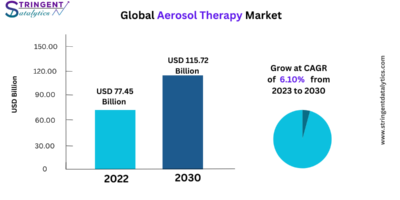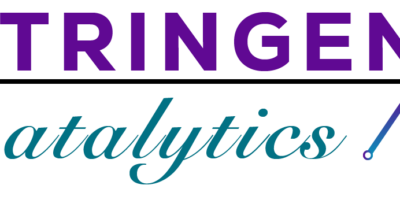Hospital Acquired Infection Treatment Market size was valued at USD 29.54 Billion in 2023 to USD 33.77 Billion by 2031, growing at a CAGR of 1.5% in the forecast period (2024-2031).
The Hospital Acquired Infection (HAI) Treatment Market is witnessing steady growth, driven by the increasing prevalence of healthcare-associated infections, rising awareness of infection control measures, and advancements in treatment options. Hospital acquired infections, also known as nosocomial infections, are infections acquired by patients during their stay in healthcare facilities, leading to significant morbidity, mortality, and healthcare costs.
Key Factors Driving the Hospital Acquired Infection Treatment Market:
- Prevalence of Hospital Acquired Infections: The growing incidence of healthcare-associated infections, including surgical site infections, urinary tract infections, bloodstream infections, and pneumonia, is driving the demand for effective treatment options.
- Antibiotic Resistance: The emergence of antibiotic-resistant pathogens, such as methicillin-resistant Staphylococcus aureus (MRSA) and multidrug-resistant Gram-negative bacteria, is increasing the complexity of treating hospital acquired infections and driving the need for alternative treatment strategies.
- Stringent Infection Control Regulations: Stringent regulations and guidelines mandating infection prevention and control practices in healthcare facilities, coupled with increasing emphasis on patient safety and quality of care, are driving the adoption of infection control measures and treatment protocols.
- Advancements in Treatment Modalities: Ongoing research and development efforts are leading to the development of new antimicrobial agents, vaccines, and treatment modalities for hospital acquired infections, offering improved efficacy and reduced toxicity.
- Increasing Healthcare Expenditure: Rising healthcare expenditure and investments in healthcare infrastructure, particularly in emerging economies, are contributing to the expansion of hospital acquired infection treatment markets.
Key Segments within the Hospital Acquired Infection Treatment Market:
- Treatment Type:
- Antimicrobial Agents: Antibiotics, antifungals, and antivirals used to treat bacterial, fungal, and viral hospital acquired infections.
- Vaccines: Preventive vaccines against common pathogens associated with healthcare-associated infections, such as influenza and pneumococcus.
- Antiseptics and Disinfectants: Topical agents and environmental disinfectants used for infection control and prevention in healthcare settings.
- Other Therapeutic Modalities: Immunotherapies, probiotics, and adjunctive therapies used in the treatment of hospital acquired infections.
- Infection Type:
- Surgical Site Infections: Infections occurring at the site of surgery, including wound infections, deep tissue infections, and organ/space infections.
- Urinary Tract Infections: Infections affecting the urinary system, including catheter-associated urinary tract infections (CAUTIs).
- Bloodstream Infections: Infections affecting the bloodstream, such as central line-associated bloodstream infections (CLABSIs).
- Pneumonia: Infections affecting the lungs, including ventilator-associated pneumonia (VAP) and healthcare-associated pneumonia (HCAP).
- Pathogen Type:
- Bacterial Infections: Common bacterial pathogens associated with hospital acquired infections, including Staphylococcus aureus, Enterococcus spp., Escherichia coli, Klebsiella pneumoniae, and Pseudomonas aeruginosa.
- Fungal Infections: Opportunistic fungal pathogens such as Candida spp. and Aspergillus spp. associated with healthcare-associated infections.
- Viral Infections: Viruses causing nosocomial infections, including influenza virus, respiratory syncytial virus (RSV), norovirus, and hepatitis viruses.
- End Users:
- Hospitals and Clinics: Primary providers of treatment for hospital acquired infections, including acute care hospitals, specialty hospitals, and outpatient clinics.
- Long-Term Care Facilities: Facilities providing care for elderly and chronically ill patients at increased risk of healthcare-associated infections.
- Ambulatory Surgical Centers: Facilities performing surgical procedures and outpatient treatments requiring infection prevention and control measures.
Market Drivers and Trends:
- Rising Incidence of Multidrug-Resistant Infections: The increasing prevalence of multidrug-resistant organisms (MDROs) in healthcare settings is driving the demand for new treatment options and infection control strategies.
- Focus on Antimicrobial Stewardship: The implementation of antimicrobial stewardship programs aimed at optimizing antimicrobial use, reducing antibiotic resistance, and improving patient outcomes is driving the adoption of targeted and judicious antibiotic prescribing practices.
- Technological Innovations: Technological advancements in infection control products, including novel disinfectants, antimicrobial coatings, and point-of-care diagnostics, are improving the effectiveness of infection prevention and treatment efforts.
- Collaborative Initiatives: Collaborative efforts between healthcare institutions, government agencies, industry stakeholders, and professional organizations to address healthcare-associated infections through surveillance, research, and quality improvement initiatives.
- Shift towards Prevention and Early Detection: Increasing emphasis on infection prevention strategies, including hand hygiene, environmental cleaning, and vaccination, as well as early detection and prompt treatment of hospital acquired infections to reduce transmission and improve patient outcomes.
Challenges:
- Antibiotic Resistance: The emergence and spread of antibiotic-resistant pathogens pose a significant challenge to the treatment of hospital acquired infections, limiting treatment options and increasing the risk of treatment failure and mortality.
- Healthcare-associated Outbreaks: Outbreaks of hospital acquired infections, such as those caused by multidrug-resistant organisms or viral pathogens, can lead to increased morbidity, mortality, and healthcare costs, highlighting the need for effective infection control measures and outbreak response protocols.
- Healthcare Resource Constraints: Limited healthcare resources, including personnel, infrastructure, and funding, may impede infection control efforts and limit access to appropriate treatment for hospital acquired infections, particularly
Click Here, To Get Free Sample Report https://stringentdatalytics.com/sample-request/hospital-acquired-infection-treatment-market/16507/
Market Segmentations:
Global Hospital Acquired Infection Treatment Market: By Company
Abbott
Pfizer
Bayer
Cepheid
AstraZeneca
Roche
Johnson & Johnson
Merck
Cipla
GlaxoSmithKline
Aridis Pharmaceuticals
Astellas Pharma
Daiichi Sankyo
Bristol-Myers Squibb
Eli Lilly
Global Hospital Acquired Infection Treatment Market: By Type
Urinary Tract Infections
Ventilator Associated Pneumonia
Surgical Site Infections
Bloodstream Infections
Gastrointestinal Infection
ENT Infections
Skin Infection
Bone Infection
Global Hospital Acquired Infection Treatment Market: By Application
Hospital Pharmacies
Retail Pharmacies
Drug Store
E-Commerce
Global Hospital Acquired Infection Treatment Market: Regional Analysis
The regional analysis of the global Hospital Acquired Infection Treatment market provides insights into the market’s performance across different regions of the world. The analysis is based on recent and future trends and includes market forecast for the prediction period. The countries covered in the regional analysis of the Hospital Acquired Infection Treatment market report are as follows:
North America: The North America region includes the U.S., Canada, and Mexico. The U.S. is the largest market for Cold-chain Pharma in this region, followed by Canada and Mexico. The market growth in this region is primarily driven by the presence of key market players and the increasing demand for the product.
Europe: The Europe region includes Germany, France, U.K., Russia, Italy, Spain, Turkey, Netherlands, Switzerland, Belgium, and Rest of Europe. Germany is the largest market for Cold-chain Pharma in this region, followed by the U.K. and France. The market growth in this region is driven by the increasing demand for the product in the automotive and aerospace sectors.
Asia-Pacific: The Asia-Pacific region includes Singapore, Malaysia, Australia, Thailand, Indonesia, Philippines, China, Japan, India, South Korea, and Rest of Asia-Pacific. China is the largest market for Cold-chain Pharma in this region, followed by Japan and India. The market growth in this region is driven by the increasing adoption of the product in various end-use industries, such as automotive, aerospace, and construction.
Middle East and Africa: The Middle East and Africa region includes Saudi Arabia, U.A.E, South Africa, Egypt, Israel, and Rest of Middle East and Africa. The market growth in this region is driven by the increasing demand for the product in the aerospace and defense sectors.
South America: The South America region includes Argentina, Brazil, and Rest of South America. Brazil is the largest market for Cold-chain Pharma in this region, followed by Argentina. The market growth in this region is primarily driven by the increasing demand for the product in the automotive sector.
Click Here, To Buy Premium Report https://stringentdatalytics.com/purchase/hospital-acquired-infection-treatment-market/16507/?license=single
The report has helped our clients:
- To describe and forecast the Market size, on the basis of various segmentations and geography, in terms of value and volume
- To measure the changing needs of customers/industries
- To provide detailed information regarding the drivers, restraints, opportunities, and challenges influencing the growth of the Market
- To gain competitive intelligence and uncover new opportunities
- To analyse opportunities in the Market for stakeholders by identifying high-growth segments in Market
- To strategically profile key players and provide details of the current competitive landscape
- To analyse strategic approaches adopted by players in the Market, such as product launches and developments, acquisitions, collaborations, contracts, expansions, and partnerships
About Stringent Datalytics
Stringent Datalytics offers both custom and syndicated market research reports. Custom market research reports are tailored to a specific client’s needs and requirements. These reports provide unique insights into a particular industry or market segment and can help businesses make informed decisions about their strategies and operations.
Syndicated market research reports, on the other hand, are pre-existing reports that are available for purchase by multiple clients. These reports are often produced on a regular basis, such as annually or quarterly, and cover a broad range of industries and market segments. Syndicated reports provide clients with insights into industry trends, market sizes, and competitive landscapes. By offering both custom and syndicated reports, Stringent Datalytics can provide clients with a range of market research solutions that can be customized to their specific needs.
Contact Us
Stringent Datalytics
Contact No- +1 346 666 6655
Email Id- sales@stringentdatalytics.com



Leave a Reply